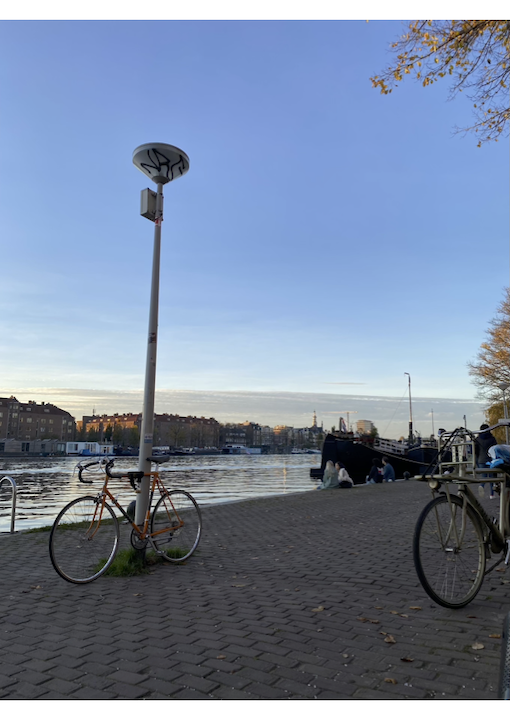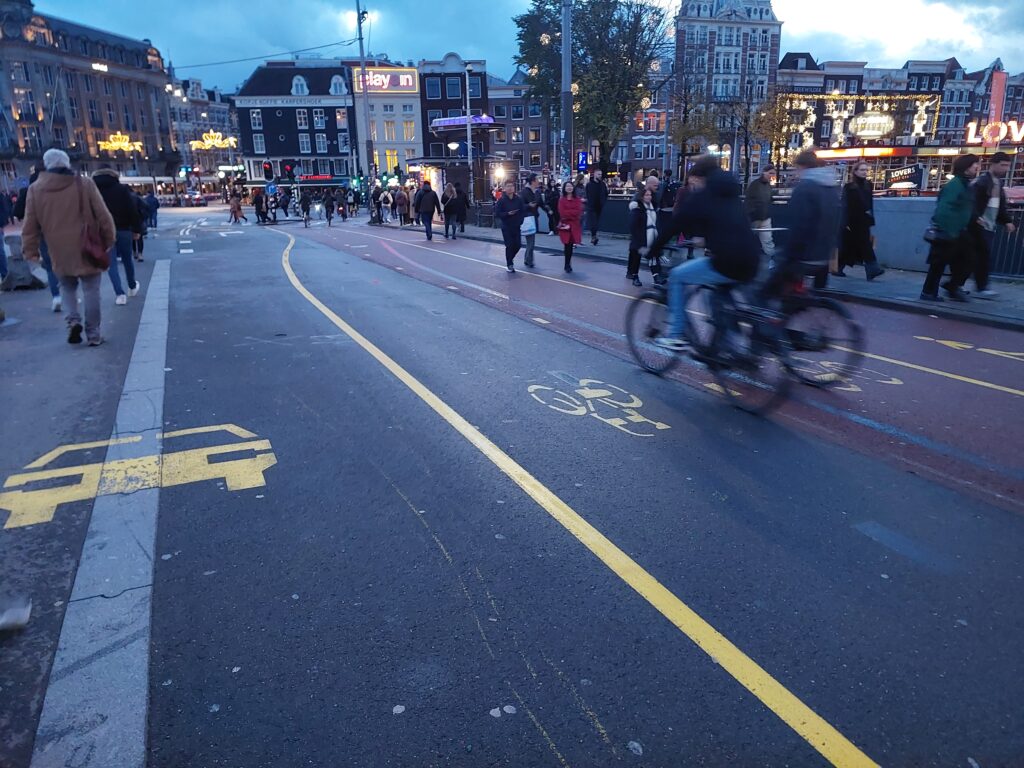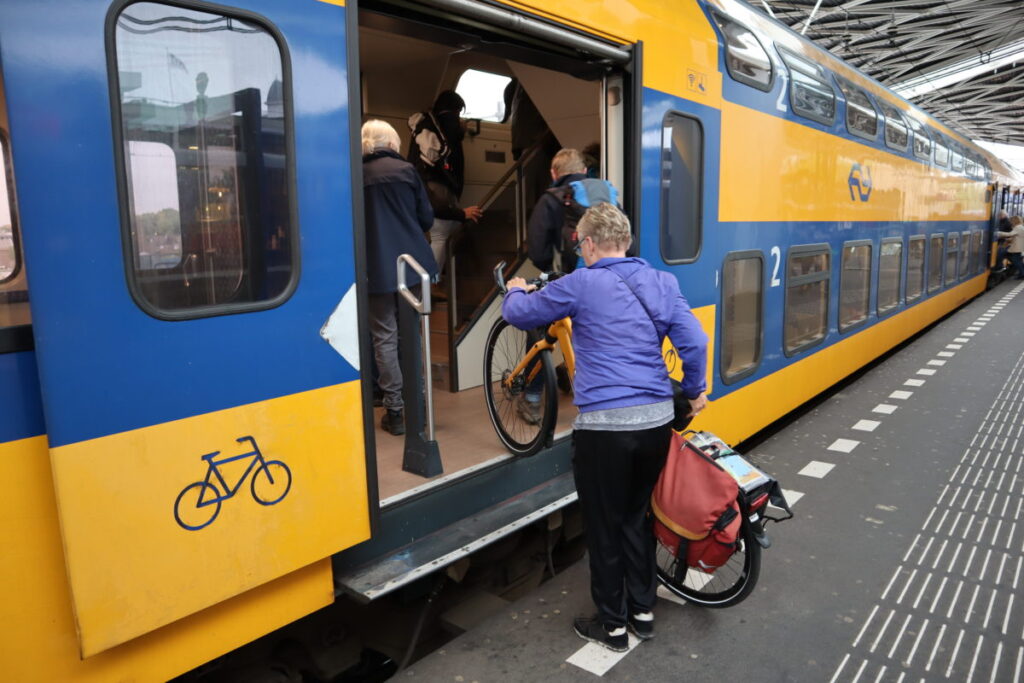H.M.J. van Dijk
Most Inspiring Essay Finalist, February 2020
Unraveling the Cycling City MOOC on Coursera
Although it seems the Urban Cycling Institute, due to the monopoly of the bicycle in the cycling world, excludes other forms of cycling [1] other than the bicycle, its intention however is inclusion. It tries to raise attention to the exclusion of people and limited ways of use of our streets, because of the radical monopoly of our streets by automobiles.
My key takeaway from this course is inclusiveness. Urban streets should not solely be for transport. They should serve as a place to be, a place to meet, a place to enjoy urban life, a place to live. Even in the Netherlands, a cycling nation unrivalled in numbers of cycling trips and cycling kilometres per capita, cycling safety per cycled kilometre, cycles per person and probably the best cycle network in the world, streets are mainly organized around automobiles. Cars tend to be seen as the top of the food chain, with severe outcomes in planning and use of public space.
The question that is posed in “Is there such a thing as a ‘fair’ distribution of road space?”[2] made clear to me that there is a broader challenge than just the plain infrastructure and rules of traffic alone. Until then I was more concerned with differences between urban and rural cycling, leisure cycling and commuting, different types of human powered transport, etcetera. While reading the article by Nello-Deakin, I realized that it is also about monopolizing a part of public space solely for traffic and within this domain of traffic monopolizing it for automobiles. And with that, excluding groups of people and all kinds of other activities than transport from large parts of public space. Even worse, it limits groups of people in joining society to their fullest.
This thought was strengthened when reading “Scofflaw bicycling: Illegal but rational”[3]. I concluded that car drivers are most of the times unable to correctly assess the risk for others, while they assess their scofflaw behavior as low-risk behaviour. With that, car drivers exclude those not travelling by car. So why does this radical monopoly of automobile traffic diminish the inclusiveness of societies? I see three main reasons for that.
Firstly, thinking of streets solely as veins through which traffic flows excludes other uses and, since there is a monopoly of motorized traffic to a smaller or larger degree, also excludes the surroundings for other purposes, like playing, socializing, etcetera. It is not possible to play safely on a street or its surroundings, where motorized means of transportation of more than 1000 kilograms travel at a speed of about 14 meters per second. In the direct vicinity of such streets, social activity is diminished due to noise, lack of space and the absence of a suitable environment to do something else than travelling.
Secondly, this way of planning and using streets excludes groups of people that, in one way or another, have more trouble to cope with the speed, fast acceleration and sheer mass of automobile traffic, from using public space, and with that society fully. In its most severe form, automobile traffic literally limits the space in which some people can move. In my own surroundings I know someone whose sight and hearing have been diminished as a result of a rare illness. Travelling West she can travel by herself as far as a semi-highway (70 km/h speed limit). There is a crosswalk for pedestrians, but the traffic light has no audio warning signal. It’s just made impossible for her to cross that street safely on her own. Apart from the other traffic obstacles she has to overcome in her surroundings, this one is a bridge too far because we, as a society, favour speed above inclusiveness[4].
Thirdly, within the realm of transport the monopoly of automobiles in traffic and traffic planning curb groups of people in their ability to use different modes of human-powered transport, such as cycling. Although The Netherlands have a high-quality cycling infrastructure compared to many other countries, many people see cycling as a more dangerous mode of transport than driving a car. This is because people tend to think from a passenger’s perspective and do not analyze which mode of transport poses the greatest threat to others. So, even in the Netherlands, the automobile monopoly tends to strengthen itself unless we start interpreting, planning and using our streets not only as a means for transportation, and transportation not exclusively as the domain of automobiles.
Of course rethinking our streets will meet resistance, for we as human beings are fond of what we know and can see change as a threat. Arguments against a more inclusive vision of our streets can be that travelling times will rise or that emergency services will not be as effective as they are now. In urban surroundings, the time needed to travel from A to B in by car is in most of the times not that much faster as congestion slows car drivers down. More cycles make for fewer cars, which in turn means that those who still travel by car will meet less congestion. In the end, travelling time in general will not change that much. Emergency services will still be able to use the public space to travel through at high speed. Presumably, they will be able to get to their destination faster as those not using a car can make space for emergency services more easily.
A course of research to help this rethinking of our streets is to aim the question of Nello-Deakin about fairness towards inclusiveness and why the automobile monopoly is excluding people from joining our society to their fullest. I propose to not only use speed as a factor, but also massiveness in numbers, the monopoly, and massiveness in sheer mass, a car as a lump of metal of 1000 kilograms or more. I’m curious whether it is possible to measure the influence of speed, acceleration and mass of traffic on the degree of perceived inclusiveness by people. It might be that automobiles by their sheer mass, speed and acceleration exclude more people with fewer numbers of cars, while cycles may exclude people also, but only when their numbers are becoming much higher.
Another topic I’m interested in is the domain of intercity connections by cycles and human powered transport and how intercity cycling changes the characteristics of cycling compared to intracity cycling.
All in all though, cycling is, as several cities in the Netherlands show, a mode of transportation to break the excluding automobile monopoly in urban surroundings. With that cycling makes public space much more inclusive for whatever activity we desire apart from transportation and to those that are now excluded, either cycling or not.
- In all literature and videos in this course, a cycle is almost all the times referred to as an upright cycle with two wheels, a bicycle. This is, I believe, not because the Urban Cycling Institute wants to monopolize cycling for bicycles, but because the definition of a cycle is influenced extremely by the definition of a cycle of that other organisation called UCI, the Union Cycliste Internationale, and the fact that the bicycle is the dominant cycle in numbers. For large groups of people other forms of cycles with more than two wheels and other positions like recumbent cycles are a means to cycle. And some of them, for example those with difficulty to keep their balance, really need more than two wheels to be able to cycle. It’s a matter of including them too 😉 ↩︎
- Is there such a thing as a ‘fair’ distribution of road space? Nello-Deakin, S. (2019), Journal of Urban Design. https://doi.org/10.1080/13574809.2019.1592664 ↩︎
- Scofflaw bicycling: Illegal but rational by Marshall, W. E., Piatkowski, D., & Johnson, A. (2017) ↩︎
- This provincial semi-highway has several intersections, controlled by traffic lights. To facilitate the motorized traffic on this semi-highway a green-wave was planned to keep traffic flowing at 70 kilometres an hour. To make this possible, the traffic lights were altered. Manual control in the form of push buttons for pedestrians and cyclists who needed to cross the semi-highway was removed. Also audio aid when pedestrians can cross for those who can see badly or not at all was removed. Due to protests, amongst them the named woman, with for example the U.N. treaty on human rights in hand, the push buttons are restored and hopefully the audio warning will follow soon. To cross safely though, you still need to walk with the speed of lightning. This is for me a typical illustration of excluding people by the monopoly of automobiles and the speed with which we let them travel. ↩︎



